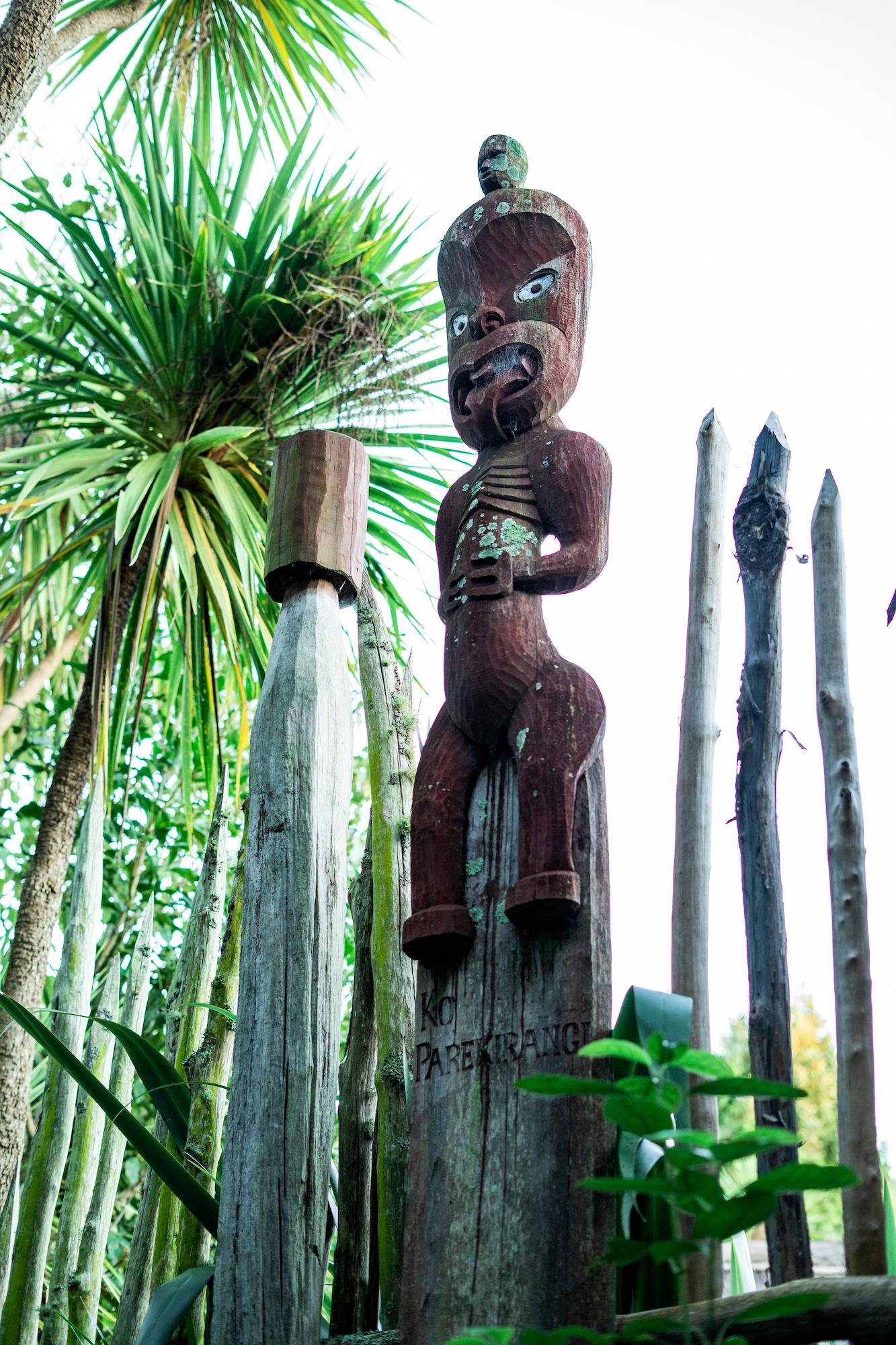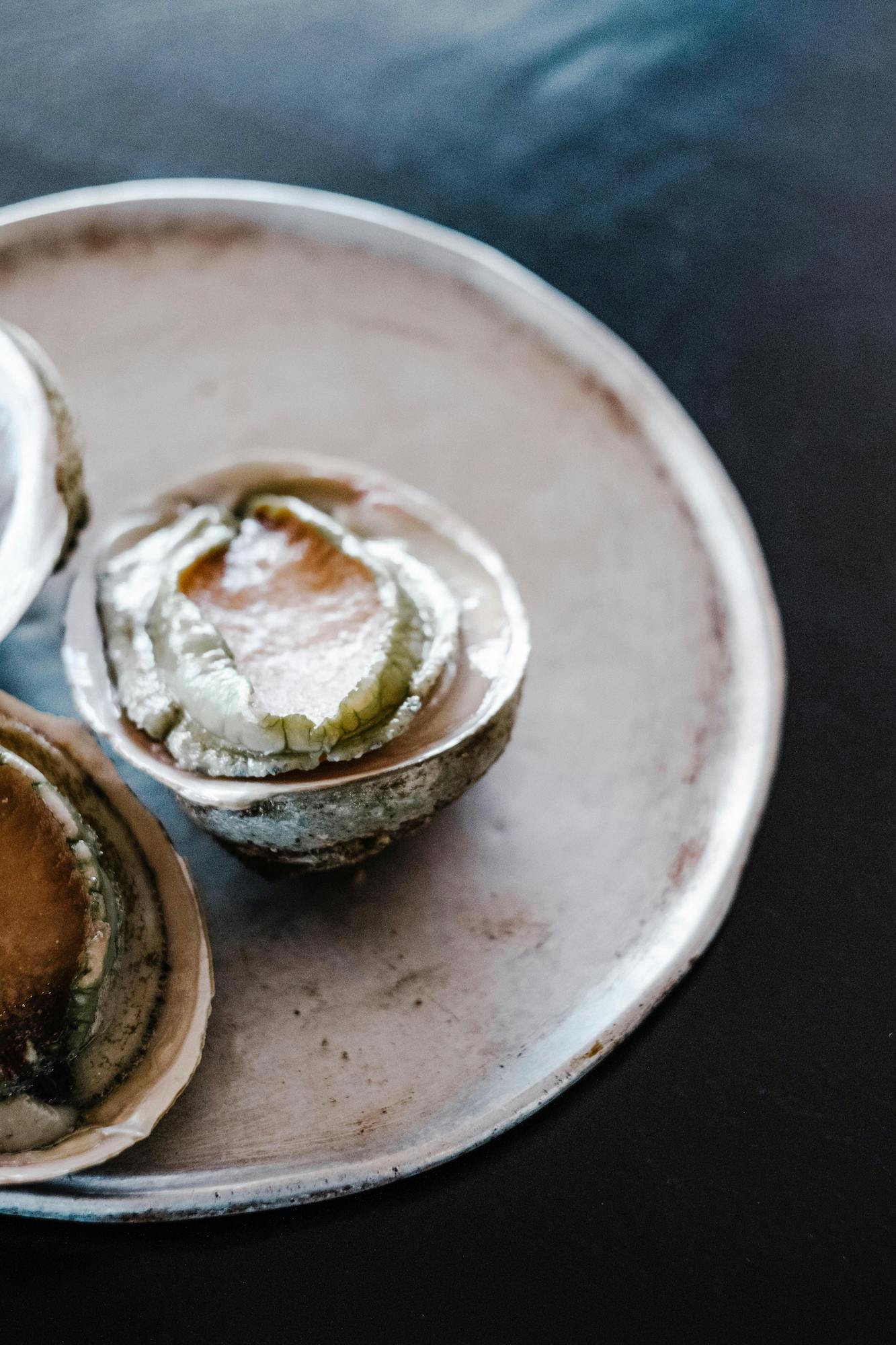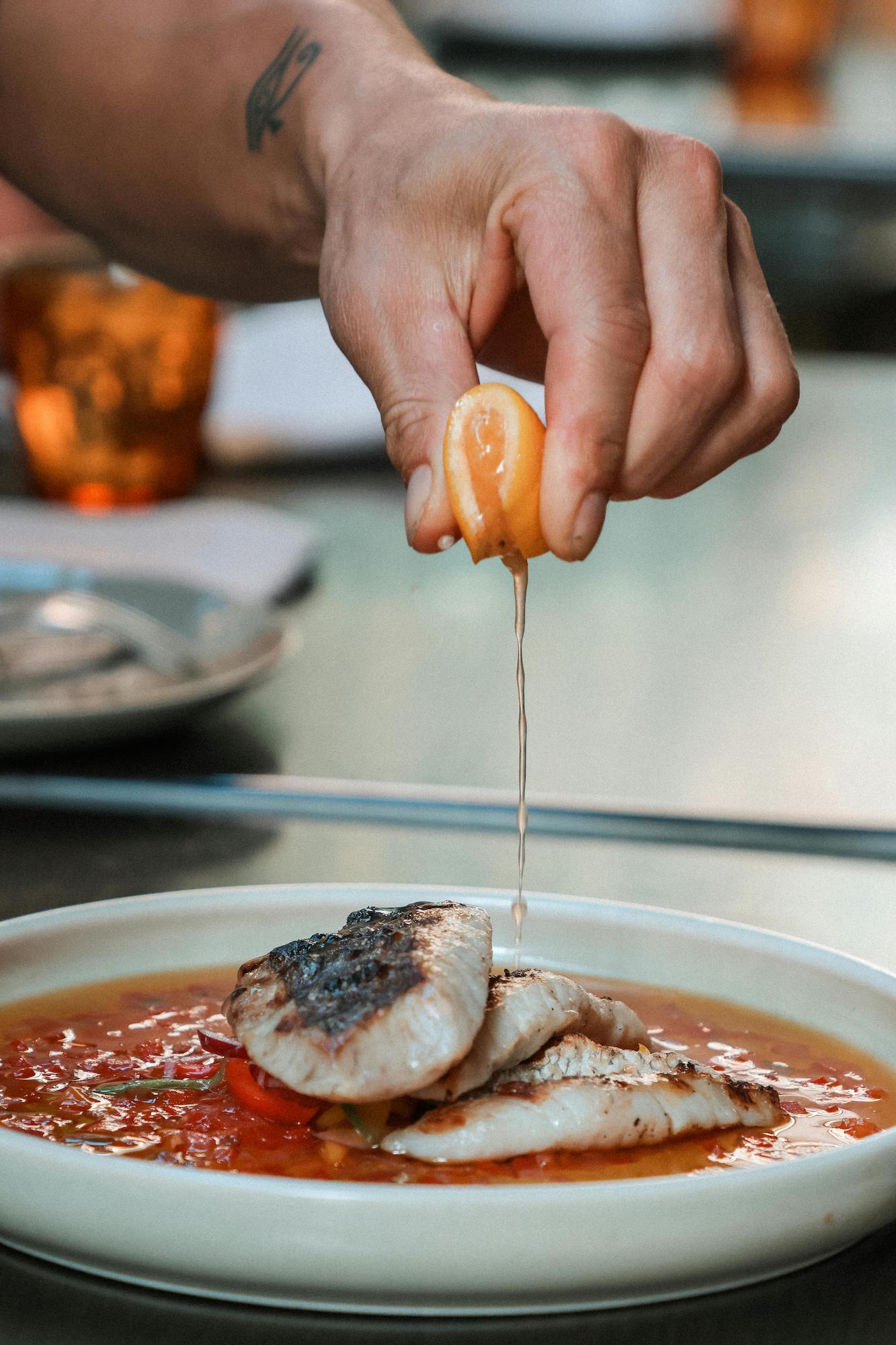
Steam rises from the earth as heated volcanic stones surrender their heat to layers of lamb, vegetables, and bread wrapped in flax leaves. The air fills with an earthy aroma that speaks to thousands of years of tradition. This is hāngī, and it represents just one facet of New Zealand’s remarkable culinary tapestry—a cuisine where indigenous Māori traditions interweave with contemporary innovation to create something entirely unique.
New Zealand traditional food tells stories of volcanic landscapes and pristine coastlines, of Māori ancestors who understood the land’s rhythms and European settlers who brought their own flavors to mix with native ingredients. From the briny sweetness of pāua pulled fresh from southern waters to the tender lamb that roams Canterbury’s golden hills, every dish connects diners to the country’s cultural soul.
Food here serves as more than sustenance; it functions as a cultural bridge. When you taste a perfectly prepared whitebait fritter or savor honey still warm from Manuka trees, you’re experiencing centuries of knowledge passed down through generations.

The Māori Influence on Modern Cuisine
Long before European settlers arrived, Māori communities had developed sophisticated cooking techniques perfectly suited to New Zealand’s unique environment. These traditional methods didn’t disappear with colonization—instead, they evolved and found new expression in contemporary kitchens across the country.
The influence extends far beyond cooking methods. Māori cuisine introduced New Zealanders to native ingredients that remain central to the national palate today. Kawakawa leaves, with their peppery bite, now appear in everything from craft chocolates to fine dining sauces. Horopito, sometimes called New Zealand’s native pepper, adds complexity to modern meat dishes.
Traditional Māori cooking emphasized communal preparation and consumption. This philosophy continues to shape New Zealand’s food culture, where shared meals remain central to social gatherings. Modern chefs increasingly recognize the sophistication of traditional Māori techniques. The slow, gentle heat of earth oven cooking produces textures and flavors impossible to achieve through conventional methods.
Māori-Inspired Hāngī Preparation Methods
The hāngī represents perhaps the most distinctive cooking method in traditional New Zealand cuisine. This earth oven technique requires precise timing, deep cultural knowledge, and respect for the process that transforms simple ingredients into something transcendent.
Preparation begins before dawn with the careful selection of volcanic stones—typically basalt that retains heat effectively. These hāngī stones must be heated in a wood fire for several hours until they glow white-hot. While the stones heat, cooks prepare the food in specific layers. Traditionally, meat goes on the bottom layer, closest to the heat source. Lamb, pork, or chicken pieces are wrapped in large leaves, historically flax or cabbage leaves.
The pit, or “rua,” must be dug to precise specifications—typically about three feet deep. When stones reach optimal temperature, they’re quickly transferred to the pit. The food, arranged on wire baskets, is lowered onto the stones. Wet sacks cover the entire arrangement, followed by earth to seal in heat and steam.
Most hāngī cook for three to four hours, depending on the food quantity. During this period, the earth oven functions as a perfect steaming environment, cooking food gently and infusing it with subtle smoky flavors that can’t be replicated through other methods.
Essential Seafood Dishes from the Coast
New Zealand’s 15,000 kilometers of coastline provide an extraordinary seafood variety that forms the backbone of the country’s culinary identity. The cold, clean waters produce shellfish, fish, and crustaceans that rival any in the world for quality and flavor.
Green-lipped mussels, found only in New Zealand waters, offer a sweet, briny taste with hints of the ocean’s mineral complexity. These large mollusks often appear steamed with white wine and garlic, or incorporated into creamy chowders that warm diners on Wellington’s windiest days.
Crayfish, known locally as “cray,” represent luxury dining at its finest. These spiny lobsters are typically prepared simply to showcase their natural sweetness—boiled in seawater and served with lemon and butter.
Whitebait holds special significance in New Zealand food culture. These tiny, translucent fish arrive in coastal rivers during specific seasons, creating a brief but intense fishing period. The traditional preparation involves mixing the whole fish with beaten eggs and minimal seasoning, then pan-frying to create fritters with a delicate texture and subtle oceanic flavor.
Pāua, the local abalone, presents one of the country’s most distinctive tastes. These single-shelled mollusks develop firm, flavorful meat that requires careful preparation. Pounding the meat to tenderize it before cooking has become a traditional technique, often followed by quick searing.

A Taste of the Sea in New Zealand Cuisine
The best seafood experiences happen where ocean meets shore. In Kaikoura, roadside stalls serve fresh-cooked crayfish while customers watch whales breach in the distance. Auckland’s Fish Market buzzes with activity as vendors display daily catches on beds of crushed ice.
High-end restaurants have mastered seafood preparation, but many locals argue that the best experiences happen in humble surroundings. Fish and chip shops throughout the country serve locally caught fish battered and fried to golden perfection, accompanied by hand-cut chips and lemon.
What Makes a Kiwi Lamb Dish Iconic?
New Zealand lamb has achieved international recognition—the country’s unique geography and farming practices produce meat with exceptional flavor and tenderness. Animals graze on grass year-round in temperate pastures, developing complex flavors that reflect their environment’s terroir.
Sheep roam freely across vast paddocks, feeding on diverse grasses, herbs, and clovers that grow naturally in the maritime climate. This varied diet contributes to the meat’s distinctive taste—less gamey than European lamb, with a clean, sweet flavor that pairs beautifully with local wines.
Traditional preparation methods emphasize the meat’s natural qualities rather than masking them with heavy sauces. Classic New Zealand roast lamb relies on garlic, rosemary, and mint—ingredients that complement rather than compete with the lamb’s inherent flavors.
Different regions produce lamb with subtle variations. Canterbury lamb tends to be mild and tender, while Otago lamb often has a more pronounced flavor due to sheep diets of tussock grasses and alpine herbs.
Best Cuts for Traditional Roast Lamb
Selecting the proper cut determines success. The leg represents the most popular choice, offering a balance of lean and fatty areas. A bone-in leg weighing four to five pounds serves six to eight people generously.
Shoulder cuts provide more marbling and flavor, though they require longer, slower cooking. For special occasions, a crown roast presents beautifully and cooks evenly.
Preparation begins with bringing meat to room temperature, which is crucial for even cooking. Proper seasoning involves rubbing garlic and herbs into the meat several hours beforehand.
Temperature control separates good roast lamb from great. Start with high heat—450°F—for fifteen minutes to create a flavorful crust, then reduce to 350°F for remainder of cooking.

Indulgent New Zealand Dessert Traditions
Pavlova embodies New Zealand’s dessert creativity. It’s a dish that transforms simple ingredients into magic through technique. The crisp meringue shell gives way to a marshmallow-soft interior, topped with fresh cream and seasonal fruit that highlights the country’s exceptional produce.
New Zealand versions emphasize local fruit: kiwifruit slices that add tartness, strawberries from Central Otago, or passion fruit that provides tropical notes. The combination of textures—crispy, creamy, and juicy—satisfies multiple cravings simultaneously.
Another iconic dessert is Hokey pokey ice cream, which represents pure innovation. This golden ice cream, studded with crunchy honeycomb candy pieces, originated from manufacturers experimenting with the country’s excellent honey. And in case your sweet tooth wasn’t satiated yet, Afghan biscuits hold special significance. These chocolate cookies are topped with cornflakes and icing that originated during World War II when bakers faced ingredient shortages.
Breakfast Traditions and Morning Favorites
New Zealand breakfast culture balances hearty traditional fare with contemporary coffee sophistication. Bacon and egg pie represents the ultimate grab-and-go breakfast, found in bakeries throughout the country. This handheld meal combines flaky pastry with eggs, bacon, and sometimes cheese.
Vegemite toast divides opinion but remains a breakfast staple. This dark, salty spread provides umami richness that pairs surprisingly well with butter and hot toast.
And to top it off, no breakfast is complete without a coffee. New Zealand’s coffee culture rivals any in the world, with flat whites originating here before spreading globally. The perfect flat white balances espresso’s intensity with steamed milk’s sweetness and texture.
Cooking with Indigenous Ingredients
New Zealand’s native flora provides unique ingredients that offer flavors found nowhere else. These plants, used by Māori for centuries, increasingly appear in contemporary kitchens where chefs appreciate their distinctive characteristics.
Kawakawa grows throughout the country’s forests. The heart-shaped leaves provide a complex flavor that combines pepper’s heat with hints of eucalyptus and licorice. Modern applications include incorporating kawakawa into chocolate or using it as a meat rub.
Horopito offers more intense heat than kawakawa. The small leaves pack a considerable punch—a little goes far in seasoning meat dishes or adding depth to soups and stews.
Pikopiko, or fern shoots, appear in forests during spring when young fronds unfurl. These tender shoots taste similar to asparagus but with earthy undertones. Traditional preparation involves light steaming to preserve the delicate texture.
Manuka honey deserves recognition as an indigenous ingredient with international acclaim. Bees collecting nectar from Manuka trees produce honey with a distinctive flavor and antibacterial properties. The complex taste—floral yet earthy, sweet yet slightly bitter—enhances both sweet and savory preparations.
Foraging Guidelines and Seasonal Availability
Responsible foraging requires understanding ecological principles and legal requirements. Many native plants grow in protected areas where collection is prohibited.
Spring offers the best foraging opportunities when new growth appears. Pikopiko emerges from late August through October, while Kawakawa remains available year-round, though leaves are most tender during spring and early summer.
Safety considerations must guide all foraging activities. Many native plants have toxic look-alikes, making positive identification crucial. Beginning foragers should accompany experienced guides or participate in organized tours.
Modern Twists on Classic Dishes
Contemporary New Zealand chefs approach traditional dishes with respect while embracing innovation that reflects global influences and modern techniques. Traditional hangi preparation has inspired modern cooking methods that capture the technique’s essence while adapting to restaurant environments.
Seafood preparations increasingly reflect international influences while maintaining focus on local species. Green-lipped mussels might appear in Thai-inspired coconut curries or Crayfish preparations might incorporate Japanese techniques like gentle poaching in kombu broth.
Lamb dishes benefit from global spice blends while maintaining emphasis on the meat’s exceptional quality. Middle Eastern-inspired preparations might include za’atar crusts that complement lamb’s natural flavors.

Must-Try Regional Specialties Across the Country
New Zealand’s diverse geography creates distinct regional food cultures shaped by local ingredients, climate, and cultural influences.
Bluff oysters from the South Island’s southernmost tip represent one of the country’s most prized delicacies. These large, creamy oysters develop exceptional flavor in cold waters around Stewart Island. Available only from March to August, they’re typically served simply—on the half shell with lemon.
Canterbury lamb benefits from the region’s broad, fertile plains where sheep graze on diverse pastures. The meat’s mild flavor makes it perfect for traditional roast preparations.
The North Island’s Bay of Plenty produces exceptional kiwifruit, avocados, and citrus that appear in seasonal menus. West Coast whitebait represents a seasonal delicacy that brings communities together during the brief fishing season.
Celebrating Food Through Festivals and Events
New Zealand’s food festivals showcase culinary diversity while bringing communities together in celebration of local ingredients and traditional techniques.
The Hokitika Wildfoods Festival represents the most adventurous celebration, featuring ingredients that challenge conventional definitions of food. Participants can sample huhu grubs and possum pies that reflect New Zealand’s unique ecology.
Wellington On a Plate transforms the capital into a culinary playground each August, featuring special menus and cooking demonstrations. Marlborough Wine and Food Festival celebrates the region’s famous Sauvignon Blanc alongside complementary local food.
Participating in Local Food Festivals
Successful festival participation requires understanding event formats and cultural expectations. Most festivals encourage sampling from multiple vendors, creating opportunities to compare preparation styles.
Arriving early provides access to the best selection, which is particularly important for festivals featuring limited specialty ingredients. Engaging with vendors enhances the experience—most producers enjoy sharing information about their ingredients and preparation methods.
Street Food and Local Dining Culture
New Zealand’s street food culture reflects the country’s practical approach to dining—good food served simply, where quality matters more than presentation.
Food trucks serve everything from traditional fish and chips to innovative fusion cuisine. The best trucks focus on executing a few dishes perfectly. Bakery pies represent perhaps the most iconic street food, available at virtually every bakery and convenience store. Fish and chip shops maintain cultural significance as gathering places where communities come together over shared meals.
Where to Taste Authentic Flavors
Authentic New Zealand food experiences happen in diverse settings, from elegant restaurants to humble establishments that have perfected traditional techniques. Local markets provide excellent opportunities to taste fresh ingredients while learning about their origins.
Marae visits offer unique opportunities to experience traditional Māori food preparation and serving protocols. These cultural centers maintain traditional practices while welcoming respectful visitors.

Top Food Markets to Visit
Auckland Fish Market offers fresh seafood alongside prepared foods that showcase local species. Otago Farmers Market in Dunedin emphasizes organic and locally produced foods. Wellington’s Harbourside Market combines tourist appeal with genuine local shopping. Christchurch Farmers Market showcases Canterbury region products, including exceptional lamb and dairy.
Cook Traditional Dishes in Your Own Kitchen
Recreating authentic New Zealand flavors requires understanding traditional techniques and practical adaptations. Hangi adaptation for home cooking might involve using a large pot with a tight-fitting lid to recreate the steaming environment.
Sourcing quality lamb becomes crucial for authentic dishes. Grass-fed lamb from reputable suppliers provides better flavor than grain-finished alternatives. Seafood substitutions require understanding flavor profiles rather than seeking exact species matches.
Ingredient substitutions for indigenous plants require creativity. Kawakawa’s complex pepper-eucalyptus flavor might be approximated using combinations of black pepper, bay leaves, and mint.

Your Guide to a Culinary Journey Through the Country
Planning a food-focused trip through New Zealand requires understanding seasonal variations, regional specialties, and cultural contexts that make dining experiences memorable. The country’s compact size allows comprehensive culinary exploration while diverse geography ensures varied experiences.
Seasonal timing significantly affects ingredient availability and pricing. Summer provides the best produce selection and warmest weather for outdoor dining. Autumn offers excellent weather, harvest season specialties, and fewer crowds.
Regional planning should account for travel times and seasonal specialties. A South Island itinerary might begin in Christchurch for Canterbury lamb experiences, continue to the West Coast for whitebait season, then conclude in Central Otago for wine harvest activities.
New Zealand luxury travel offers curated experiences that highlight the country’s culinary excellence while providing cultural context and access to exclusive dining opportunities. These guided experiences often include private vineyard visits, cooking classes with renowned chefs, and access to seasonal ingredients.
For comprehensive cultural immersion, a luxury small group tour in New Zealand provides expert guides who understand both culinary traditions and their cultural significance. These tours include experiences like traditional hangi preparation and private market visits.
The country’s fishing culture represents another dimension of food tourism. New Zealand fishing experiences provide insights into sustainable practices and the cultural significance of seafood in national cuisine.
Transportation between regions offers scenic opportunities while connecting culinary destinations. Ferry crossings provide chances to sample local specialties while enjoying dramatic coastal scenery.
The ultimate New Zealand culinary journey combines structured experiences with spontaneous discoveries, balancing planned restaurant meals with casual food truck encounters and market browsing. Whether seeking traditional hangi preparation, innovative restaurant cuisine, or simple fish and chips enjoyed while watching sunset over pristine beaches, New Zealand’s food culture offers experiences that satisfy both appetite and curiosity.



